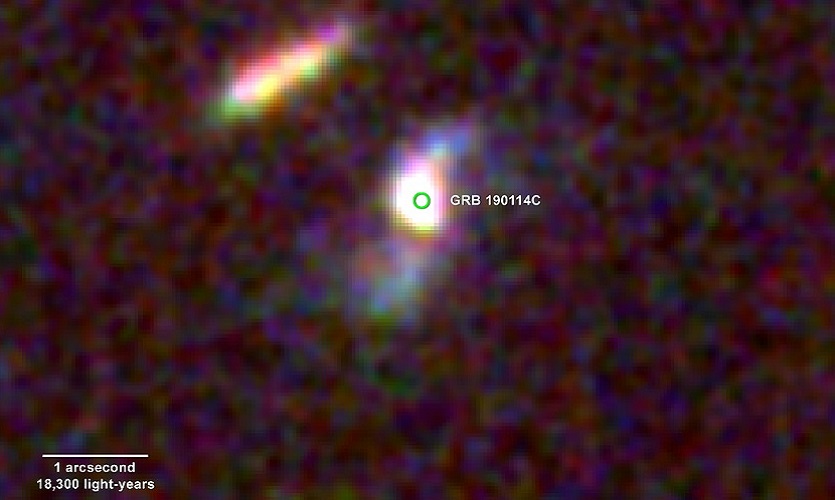Scientists shed light on brightest event in Universe

Scientists at the Astrophysics Research Institute are shedding light on one of the brightest events in the history of the Universe.
The Liverpool John Moores physicists and the Liverpool Telescope contribute to today’s study in Nature of a gamma-ray burst caused by the collapse of a massive star 5 billion light years away.
Analysis of the minutes immediately after the burst reveals emission of photons a trillion times more energetic than visible light.
“These are the highest energy photons ever seen from a gamma-ray burst,” stated Dr Daniel Perley, a senior lecturer at LJMU involved with the study.
Powerful explosions
Gamma-ray bursts are the most powerful explosions in the Universe, emitting more energy within seconds than the Sun provides in its entire life cycle. Most of this energy is in the form of gamma-rays, a form of electromagnetic radiation much more energetic than visible light or even the X-rays that are used in medicine.
On January 14 this year, an extremely bright and long gamma-ray burst, known as GRB 190114C, was detected by a suite of telescopes, including NASA’s Swift and Fermi satellites in space as well as the Major Atmospheric Gamma Imaging Cherenkov (MAGIC) telescopes and the ARI-operated Liverpool Telescope*, on the ground.
It is believed the burst is produced when material is expelled from a collapsing star at virtually the speed of light. This material collides with gas that surrounds the star, causing a powerful shock wave. The new study attributes this shock wave as the source of the ultra-high-energy photons.
Breakthrough event
Scientists have been searching for this type of signal for many years, so this detection is considered a milestone in high-energy astrophysics.
Dr Perley added: “Gamma-ray bursts have been known about for decades but many aspects of them are still a mystery. How can a single explosion produce so much energy so fast? So, these new results help us understand what really happens under these extreme conditions.”
Dr Perley was accompanied in the publication by his PhD student Allister Cockeram as part of a team of more than 100 astronomers across the globe.
A further paper based on measurements from the January 14 event has also been submitted by the Liverpool Telescope Gamma-Ray Burst team in the Astrophysical Journal. In this paper, a team of scientists currently or formerly based at Liverpool John Moores University and their students, including PhD student Jordana-Mitjans at University of Bath and Prof Shiho Kobayashi at LJMU, used the Liverpool Telescope data from this burst to study the properties of the shock-wave in detail during the critical first minutes after the explosion.
A third paper, prepared by Antonio de Ugarto Postigo of the IAA-CSIC in Granada, Spain with contributions by Perley and others, studies the nature of the distant galaxy in which the burst exploded.
* The Liverpool Telescope is a national facility owned and operated by LJMU which has built a reputation for rapid robotic reaction to unpredictable phenomenon in the solar system*. A new Robotic Telescope is currently in design phase with an in-use date of 2024. With a 4-m primary mirror – twice the size of the current telescope, it will be the largest, fastest robotic telescope in the world. https://www.robotictelescope.org/


